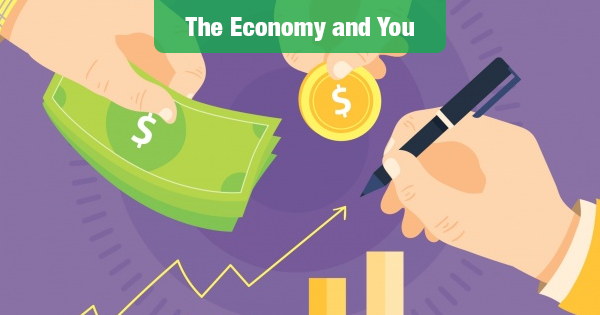
Economic Growth Downgrade
The Economy Grew at Just 2.1 percent (Annual Rate) in the Second Quarter
Real gross domestic product (GDP) increased at an annual rate of 2.1 percent in the second quarter of 2019, according to the "advance" estimate released by the Bureau of Economic Analysis. In the first quarter, real GDP increased 3.1 percent.
These latest numbers show an economy that is slowing.
The increase in real GDP in the second quarter reflected positive contributions from personal consumption expenditures (PCE), federal government spending, and state and local government spending that were partly offset by negative contributions from private inventory investment, exports, nonresidential fixed investment and residential fixed investment.
The deceleration in real GDP in the second quarter reflected downturns in inventory investment, exports, and nonresidential fixed investment.
These downturns were partly offset by accelerations in PCE and federal government spending.
Current-dollar GDP increased 4.6 percent, or $239.1 billion, in the second quarter to a level of $21.34 trillion. In the first quarter, current-dollar GDP increased 3.9 percent, or $201.0 billion.
The price index for gross domestic purchases increased 2.2 percent in the second quarter, compared with an increase of 0.8 percent in the first quarter. The PCE price index increased 2.3 percent, compared with an increase of 0.4 percent. Excluding food and energy prices, the PCE price index increased 1.8 percent, compared with an increase of 1.1 percent.
Current-dollar personal income increased $244.2 billion in the second quarter, compared with an increase of $269.8 billion in the first quarter.
Decelerations in compensation and in personal current transfer receipts were partly offset by an upturn in personal income receipts on assets and a deceleration in contributions for government social insurance (a subtraction in the calculation of personal income).
Disposable personal income increased $193.4 billion, or 4.9 percent, in the second quarter, compared with an increase of $190.6 billion, or 4.8 percent, in the first quarter. Real disposable personal income increased 2.5 percent, compared with an increase of 4.4 percent.
Personal saving was $1.32 trillion in the second quarter, compared with $1.37 trillion in the first quarter. The personal saving rate -- personal saving as a percentage of disposable personal income -- was 8.1 percent in the second quarter, compared with 8.5 percent in the first quarter.

